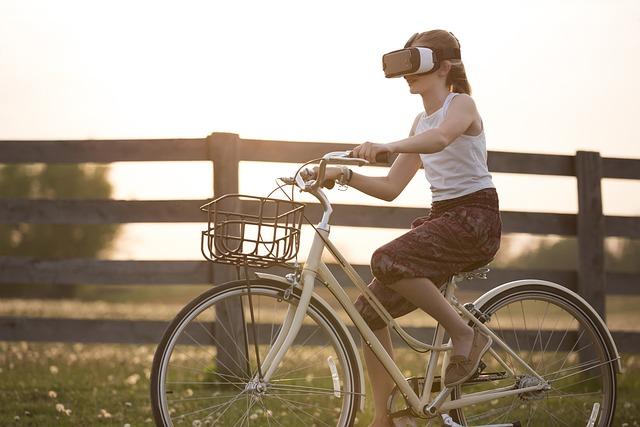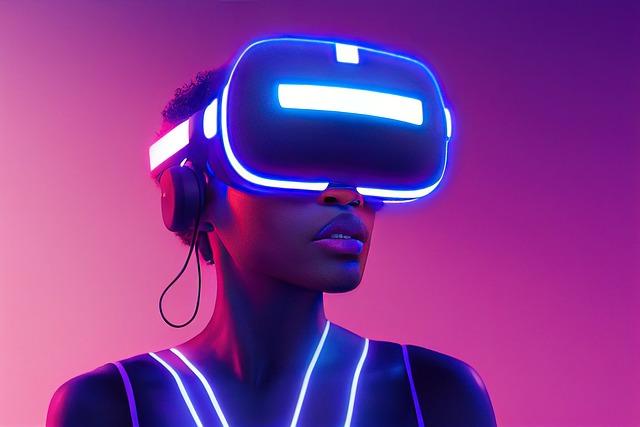- Introduction
- Enhanced Worlds
- Augmented Workspaces
- Educational Applications
- Healthcare Advancements
- Conclusion
- FAQs
- References
Introduction
Augmented Reality (AR) has rapidly expanded its presence in various sectors, revolutionizing the way we interact with digital information. This technology overlays virtual elements onto our physical world, offering enhanced experiences and capabilities.
Enhanced Worlds

(Image: Pixabay/@Peggy_Marco)
AR technology has transformed entertainment, gaming, and marketing industries by providing immersive experiences. Users can explore fantasy realms, interact with virtual characters, and engage in dynamic storytelling, blurring the line between real and digital worlds. The interactive nature of AR fosters engagement and creates unique entertainment avenues for users.
Furthermore, businesses leverage AR to enhance customer interactions through personalized experiences. AR-powered applications enable customers to visualize products in real-world settings before making a purchase decision, leading to increased user engagement and sales conversions.
Overall, enhanced worlds created through AR technology offer endless possibilities for entertainment, marketing, and interactive experiences.
Augmented Workspaces

(Image: Pixabay/@Pexels)
In the realm of business and industry, AR is reshaping work environments by introducing augmented workspaces. By overlaying digital information onto physical surroundings, AR facilitates streamlined workflows, reduces errors, and enhances productivity. For instance, AR-guided instructions allow workers to efficiently complete complex tasks by providing real-time visual aids and information.
Moreover, remote collaboration is revolutionized through AR technologies, enabling teams to interact seamlessly despite geographical barriers. Virtual meetings and collaborative sessions in augmented workspaces enhance communication and efficiency, ultimately driving innovation and productivity in various industries.
The integration of augmented workspaces in businesses signifies a paradigm shift towards more efficient and interconnected work environments.
Educational Applications

(Image: Pixabay/@Pexels)
Augmented Reality is transforming the education sector by offering innovative learning experiences. Through AR-powered educational applications, students can engage with interactive lessons, simulations, and virtual experiments, enhancing their understanding of complex concepts. AR technology makes learning more immersive and engaging, catering to diverse learning styles and promoting knowledge retention.
Teachers can utilize AR to create interactive educational content that supplements traditional teaching methods, making lessons more engaging and memorable for students. By integrating AR into classrooms, educators are embracing technology to enrich the learning experience and foster curiosity and creativity among students.
The educational applications of AR hold tremendous potential to revolutionize the way students learn and engage with academic content.
Healthcare Advancements

(Image: Pixabay/@BrianPenny)
In the healthcare industry, augmented reality is driving significant advancements in medical training, patient care, and treatment methodologies. Surgeons can benefit from AR-assisted procedures, where vital information and imaging data are overlaid directly in their field of view, enhancing precision and reducing risks during surgeries.
AR technology is also used for patient education, allowing individuals to better understand medical conditions and treatment options through interactive visualizations. Additionally, AR applications aid in rehabilitation processes by providing personalized exercises and monitoring progress effectively.
The integration of augmented reality in healthcare represents a leap forward in medical innovations, improving patient outcomes and shaping the future of healthcare delivery.
Conclusion
Augmented Reality has proven to be a transformative technology across various domains, offering enhanced experiences and capabilities in entertainment, business, education, and healthcare. The seamless integration of virtual elements into the physical world has unlocked new opportunities for innovation and engagement, shaping the future of how we interact with digital information.
FAQs
How does Augmented Reality differ from Virtual Reality?
Augmented Reality overlays digital information onto the real world, enhancing our physical environment with virtual elements. In contrast, Virtual Reality immerses users in entirely simulated environments, disconnecting them from the real world.
What are some popular AR applications available today?
Popular augmented reality applications include AR games like Pokemon Go, AR navigation tools such as Google Maps AR, and AR shopping experiences offered by various retail brands.
Is AR technology accessible to everyone?
While AR technology continues to evolve rapidly, its accessibility varies depending on device compatibility and application availability. As AR-enhanced devices become more widespread, the adoption of AR technology is expected to increase among users.

